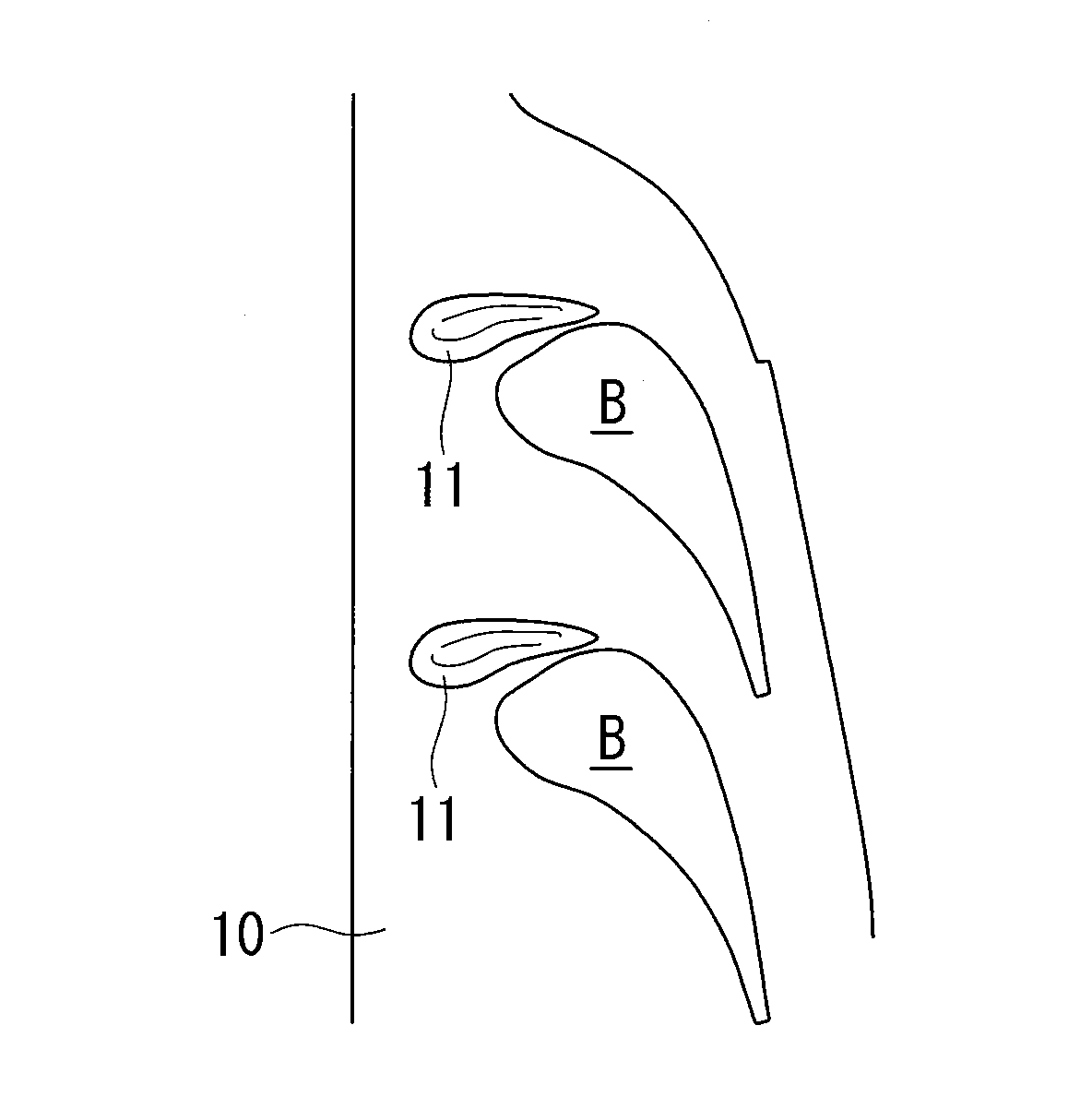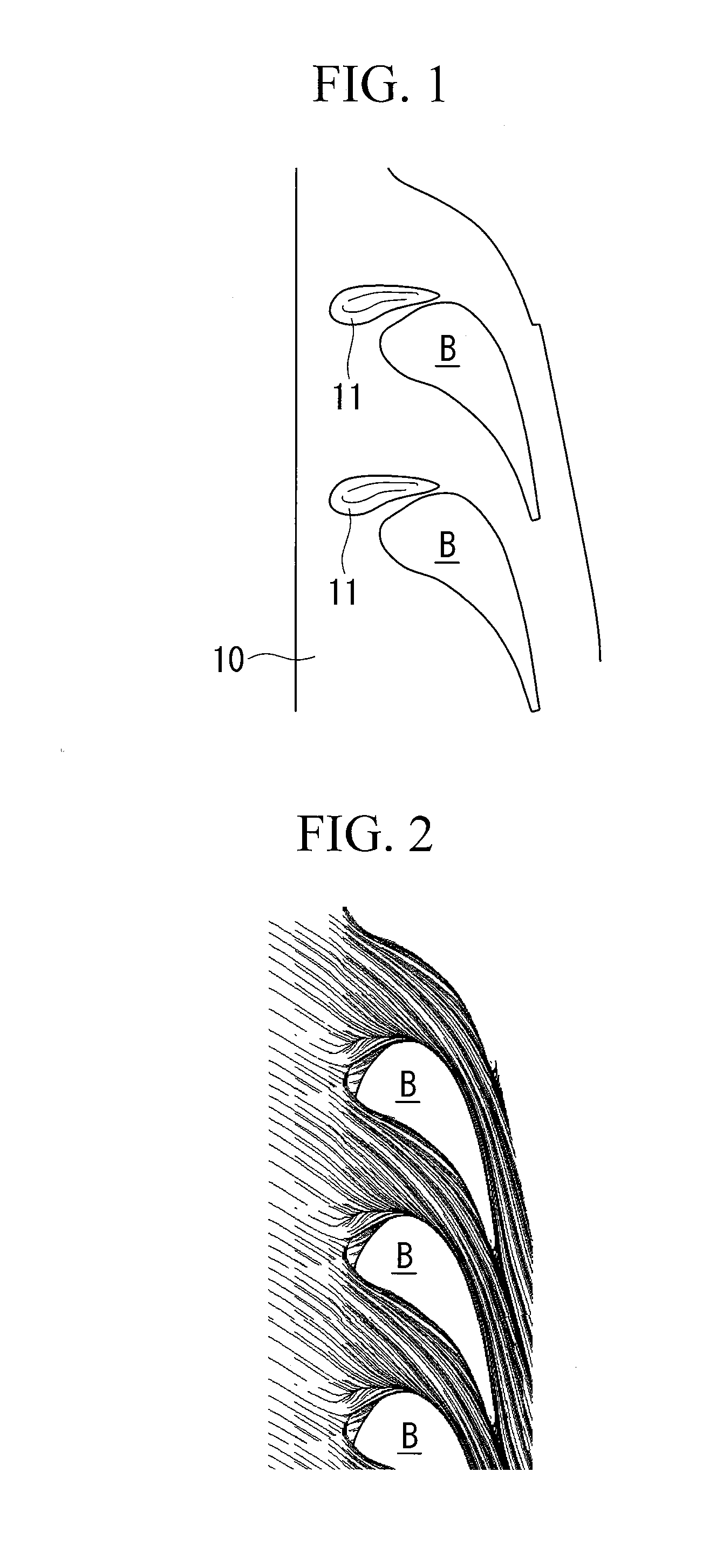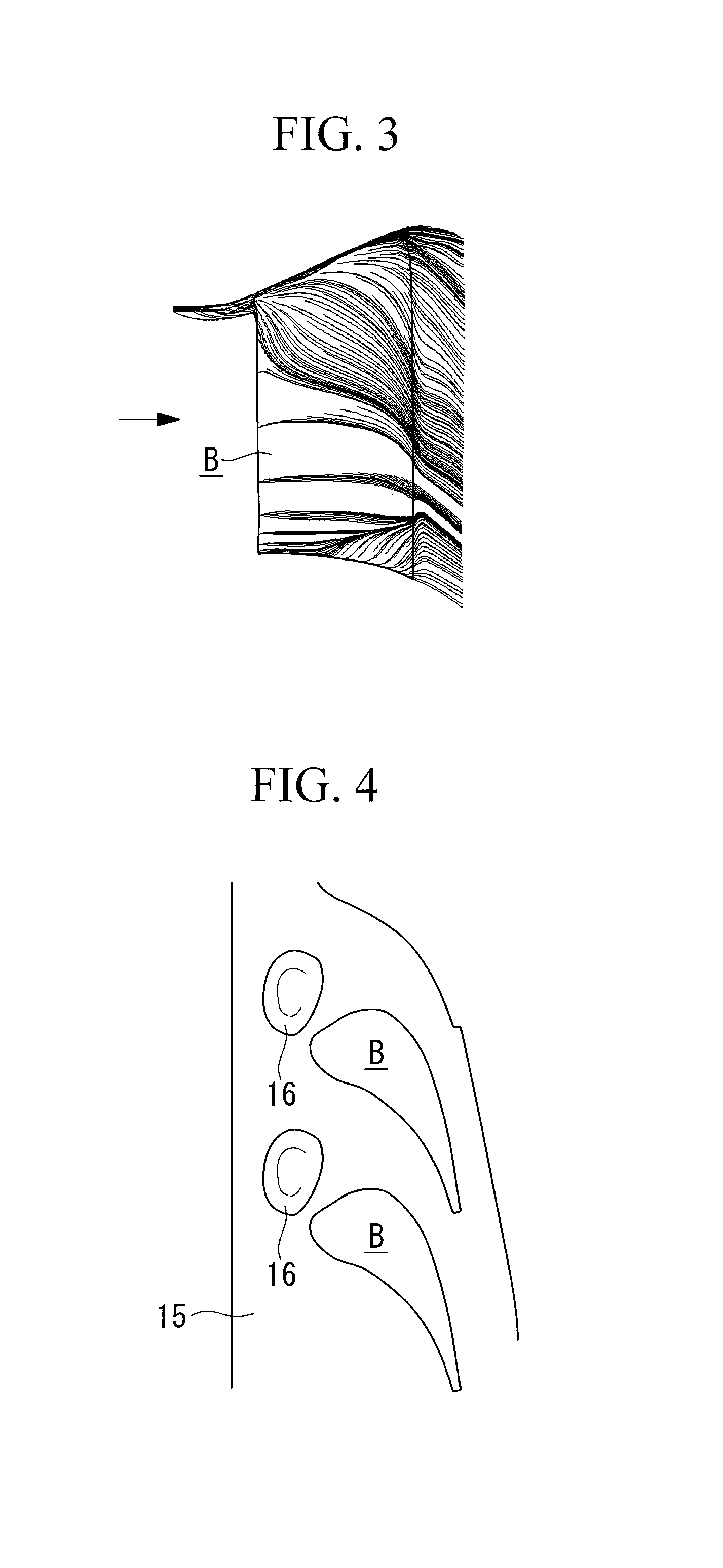Turbine blade cascade endwall
a turbine blade and cascade technology, applied in the direction of machines/engines, stators, liquid fuel engines, etc., can solve the problems of reducing and achieve the effects of reducing the secondary-flow loss due to the vortex, and improving the performance of the turbine as a whol
- Summary
- Abstract
- Description
- Claims
- Application Information
AI Technical Summary
Benefits of technology
Problems solved by technology
Method used
Image
Examples
first embodiment
[0033]a turbine blade cascade endwall according to the present invention will be described below, referring to FIGS. 1 to 3.
[0034]As shown in FIG. 1, a turbine blade cascade endwall (hereinafter, referred to as “tip endwall”) 10 according to this embodiment has respective convex portions (pressure gradient alleviating parts) 11 between one turbine stator blade B and a turbine stator blade B arranged adjacent to this turbine stator blade B. Note that solid lines drawn on the tip endwall 10 in FIG. 1 indicate contour lines of the convex portions 11.
[0035]The convex portion 11 is a portion that is, as a whole, gently (smoothly) swollen within a range from substantially −30% Cax to +40% Cax and within a range from substantially 0% pitch to substantially 40% pitch.
[0036]Here, 0% Cax indicates a leading edge position of the turbine stator blade B in the axial direction, and 100% Cax indicates a trailing edge position of the turbine stator blade B in the axial direction. In addition − (min...
second embodiment
[0050]a tip endwall according to the present invention will be described based on FIGS. 7 to 9.
[0051]As shown in FIG. 7, a tip endwall 20 according to this embodiment has respective concave portions (pressure gradient alleviating parts) 21 between one turbine stator blade B and a turbine stator blade B arranged adjacent to this turbine stator blade B. Note that solid lines drawn on the tip endwall 20 in FIG. 7 indicate isobathic lines of the concave portions 21.
[0052]The concave portion 21 is a portion that is, as a whole, gently (smoothly) depressed within a range from substantially −50% Cax to +40% Cax and within a range from substantially 0% pitch to substantially 50% pitch.
[0053]Additionally, a bottom point of this concave portion 21 is formed at a position of substantially 30% pitch in a position at substantially 0% Cax. From this position, a first trough extends substantially along (substantially parallel to) the axial direction to a location at substantially −50% Cax; and, fr...
third embodiment
[0058]a tip endwall according to the present invention will be described based on FIGS. 10 to 12. As shown in FIG. 10, a tip endwall 30 according to this embodiment has respective convex portions (pressure gradient alleviating parts) 31 and concave portions (pressure gradient alleviating parts) 32 between one turbine stator blade B and a turbine stator blade B arranged adjacent to this turbine stator blade B. Note that solid lines drawn on the tip endwall 30 in FIG. 10 indicate contour lines of the convex portions 31 and isobathic lines of the concave portions 32.
[0059]The convex portion 31 is a portion that is, as a whole, gently (smoothly) swollen within a range from substantially −30% Cax to +40% Cax and within a range from substantially 0% pitch to substantially 40% pitch (within a range from substantially 0% pitch to substantially 30% pitch in this embodiment).
[0060]A leading-edge-side apex of the convex portion 31 is formed at a position of substantially 20% pitch in a positio...
PUM
 Login to View More
Login to View More Abstract
Description
Claims
Application Information
 Login to View More
Login to View More - R&D
- Intellectual Property
- Life Sciences
- Materials
- Tech Scout
- Unparalleled Data Quality
- Higher Quality Content
- 60% Fewer Hallucinations
Browse by: Latest US Patents, China's latest patents, Technical Efficacy Thesaurus, Application Domain, Technology Topic, Popular Technical Reports.
© 2025 PatSnap. All rights reserved.Legal|Privacy policy|Modern Slavery Act Transparency Statement|Sitemap|About US| Contact US: help@patsnap.com



